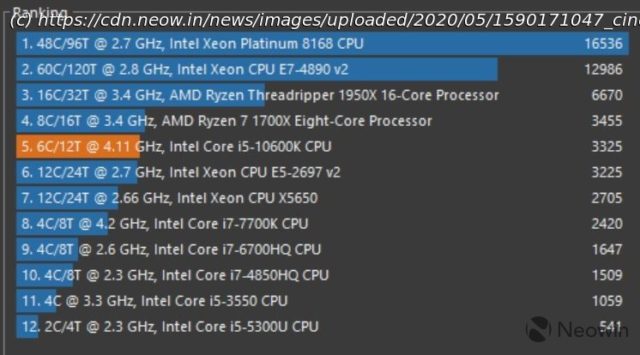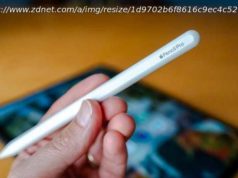With a higher TDP, hyperthreading, and more, Intel’s Core i5-10600K packs some serious improvements over its predecessor. It’s a 125W hexa-core chip that’s unlocked for overclocking.
Comet Lake S is Intel’s 10th-generation of desktop processors, and the family of CPUs was announced last month. Intel was kind enough to send over a Core i5-10600K and Core i9-10900K to review, and frankly, this has been a fun project. While I’ve reviewed over a hundred Windows 10 PCs for Neowin, I’ve never started with just a CPU.
So I built a PC, something that I’ve also never done before. First of all, getting parts were hard with stores being closed and shipments being delayed. That’s part of the reason that the Core i9 review isn’t going live today. Let’s start with the parts I used.
The RAM and the GPU were pulled out of the HP OMEN Obelisk that I reviewed about a year ago, so we should be able to compare this Core i5-10600K with the Core i7-8700 that was in that machine quite nicely. I’ll be using similar parts for the Core i9 review, although I’m waiting on a new CPU cooler for that.
It’s worth noting that Comet Lake S processors fit in the new LGA 1200 socket, which means that you do need a new motherboard. You may not, however, need a new CPU cooler. Anything that fit an LGA 115x board will fit on an LGA 1200 board. This is nice because almost every cooler currently on the market says that it’s for LGA 115x boards; however, there’s still a caveat.
The new K-series processors have a 125W TDP, whereas previous generations were 95W. These new processors are faster, more powerful, and of course, hotter. In other words, if you buy a CPU cooler that says it’s made for K-series chips, still be careful, since these K-series chips run hotter than previous generations. And if you buy one now, that cooler is probably made with previous generations in mind.
I found that the Intel BXTS15A did the job just fine on the Core i5-10600K; with the Core i9-10900K, not so much.
You can get the full list of specs here.
We can think of the Core i5-10600 as a mainstream processor, so we can think of the Core i5-10600K as a mainstream gaming processor. The K means it’s unlocked for overclocking, but it’s also more powerful. The base clock speed on the Core i5-10600 is 3.3GHz, while it’s 4.1GHz on the 10600K. Intel’s regular desktop chips still have a 65W TDP, while the K-series is 125W.
It also includes hyperthreading, something that’s new to Core i5 desktop processors. In fact, the entire lineup of Comet Lake S processors got hyperthreading this year. This means that there are twice as many threads as cores, so there are six cores and 12 threads on this CPU. Note that this provides an improvement in multithreaded applications, but not for everything.
The price listed on Intel’s website is $262-$263, which is very much mainstream pricing. The Core i9-10900K that Intel also sent me is priced at $488-$499, so there’s a big difference there between mainstream gaming and high-end gaming.
I ran the Core i5-10600K with an Nvidia GeForce RTX 2080 and 32GB HyperX Fury DDR4-2666 RAM, and DDR4-2666 is the best that’s supported with this CPU.
Home
United States
USA — software Intel Core i5-10600K review: Mainstream performance sets a new bar






